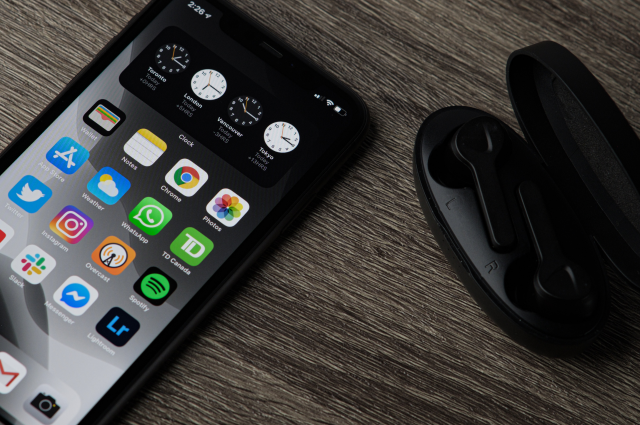An estimated 1 billion people use iPhones across the globe. While that might not be a shock to many, it remains a huge audience for marketers to target – and it doesn’t even account for Mac users. So Apple overwhelmingly sets the terms of engagement for marketers looking to reach an iPhone audience. With the release of iOS 15, Apple has changed those terms. Marketers need to understand these changes – and how they will impact their practices – to ensure they continue reaching iPhone audiences in the best way possible. Here’s how the recent iOS updates affect visitor tracking.
What are the new iOS updates, exactly? And how will the iOS updates affect visitor tracking?
The new iOS updates we’re referring to come from iOS 15. It’s been in development for a while and was first announced in June 2021. But the new Apple update wasn’t released until September 20th, 2021.
In our estimation, there are four features of the iOS 15 update that could impact website visitor tracking – and marketing in general. In this section, we’ll take a close look at each piece and analyze how they could impact your existing marketing and website visitor tracking processes.
Email open rates
Tracking email open rates for iPhone users will be much more difficult to do. iOS introduces a new feature that preloads pixels into a cache whenever an email is received.
In laymen’s terms, this means it will essentially be impossible for marketers to see who has and who hasn’t opened an email that they sent out to iPhone users.
IP addresses
iOS 15 also introduces a feature called Privacy Relay. The purpose of this is to provide several additional layers of encryption to a user’s IP address. This makes it much more challenging, if not impossible, for a user to be tracked by marketers when they use an iPhone to go online.
Privacy Relay encrypts a user’s data as soon as it leaves the device. The data is sent to two different relay points, each of which anonymizes the IP address. Marketers will be able to see the IP address’s general region, but they won’t nail it down to a specific user or even a specific area.
App privacy report
Apple’s new app privacy report feature could impact how iPhone users think about data tracking. This feature will tell iPhone users how often each app they’ve granted permissions has accessed their location, camera, photos, microphone, and contacts each week. It will also show how apps interact with third-party domains.
On its own, this doesn’t mean anything to marketers as it doesn’t restrict how they can interact with iPhone users in any way. However, as more and more iPhone users begin utilizing this app, they may become more concerned about their privacy. That could lead this group of users to privacy protection tools that make them more challenging for marketers to reach.
Email identity privacy
Hide My Email is another significant part of the latest iOS update. This feature allows users to hide their email addresses from websites they’re not interested in. It’s a way to bypass websites that make visitors enter their emails to access better deals or gated content.
Unfortunately, it will be difficult for marketers to work around this feature. It allows iPhone users to provide their email address to a website without the website seeing it. It’s similar to the feature that Craigslist uses to keep email addresses hidden.
Marketing and sales will have a tougher time validating their work
Sales and marketing teams often rely on tracking data to determine if their strategies are working as intended. When many iPhone users stop providing this data, it will likely be more difficult for marketing and sales teams to figure out whether a strategy is working or not.
For example, a marketing team may make social media outreach more of a priority. Typically, they would look at targeting data to see whether their initiatives are actually bringing more people to their company’s website. But that may no longer be as effective of a measurement strategy.
Similarly, a sales team might use tracking data to see which parts of a website a lead is looking at so they know what the prospect cares about. With less tracking data, this strategy may also need to be reconsidered.

Don’t panic. It’s not as bad as it sounds.
These changes could feel a little overwhelming. But don’t panic. They may not actually be as impactful as they appear to be at first. Here are three reasons why the new iOS 15 updates may not have as devastating an impact on website visitor tracking – and your marketing efforts – as you think.
Users have to opt into these services
The good news is that Apple isn’t signing up all iPhone and Mac users for these changes automatically. Instead, each user will have to opt themselves into each of the updates proactively. While that might not provide full reassurance, it does buy marketing and sales teams alike – or any business relying on web visitor tracking – to update their practices.
Email features only work on the Apple Mail app
Another thing to keep in mind is that the new email features discussed above will only work on the official Apple Mail app. This further reduces the size of the population that the latest iOS updates will impact.
If a prospect has a Gmail account, they will often check that account on their web browser. Even if that person is using a device with an iOS operating system, you will still see their email information since they didn’t use the official Apple Mail app to check their email.
Users must update to iOS 15 to get these features
One last reason to ease your concern is that these features only become accessible once a user has updated to iOS 15. And statistics from Apple show that, at least so far, users are updating to iOS 15 at a slower rate than they updated to iOS 14.
Tips for adjusting your processes to adapt to these changes
Though these updates may not be as bad as they initially appear, they’re obviously worth noting. In this section, we’ll give you some ideas for adjusting your practices to make the most of the new iOS update.
Track click-through rates instead of email open rates
You won’t see your target audiences’ email open rates as easily after this new iOS update. But that may not matter.
Email click-through rates are seen as the more effective way to measure the efficacy of an email campaign. And these won’t be impacted by the new iOS update in any way.
One tactic for dealing with this is to update the metrics you’re tracking. Any link that you place within the email’s content should work the same way for you as it does now.
Embrace user privacy
More and more people are starting to care about online data privacy. Instead of fighting this, perhaps it’s time to embrace it.
There are lots of different ways that you can do that. And when you do, you can even market yourself as a company that cares about data privacy. This could help your brand image improve in the eyes of your target audience.
One idea would be to commit to not handing off the user data you get to any third-party trackers. Your website visitors may even be more inclined to give you their data if you make this commitment to them.
Start using an opt-in model
Companies in the United States don’t have to use an opt-in model for data collection, but those in Europe do. As online privacy becomes more important, businesses will likely have to contend with legislation limiting how they collect and use data online.
That means you may just want to be proactive and get in front of the upcoming changes now. Switching to an opt-in model for data collection is a highly effective way to do that.
This will give your users complete control over the data that they share with you. You can even provide them with the option of selecting what you’re allowed to do with the data that you collect from them.
Embracing this type of system now will get you prepared for the future of data privacy early. In the long run, it’ll be better for your company to start getting used to this now rather than waiting until the last moment to adopt the practices.

Get powerful web visitor tracking through LeadLander
LeadLander does not expect a major impact on LeadLander “company reports” from this update as it will mostly affect mobile users – primarily consumer data. LeadLander does not report on consumer data. Many mobile visitors are not identified at the company level in LeadLander, as mobile visitors tend to show as ISP traffic which is automatically filtered out of your company reports. Reportedly, around 9% of desktop users use Safari, and mobile browser market share is about 24% globally.
The continued iOS updates may decrease the user data your company has to work with. That means it’ll need to find ways to do more with less. One of the simplest ways to do that is to start using a website visitor tracking tool like LeadLander.
With LeadLander, you can get the data that you need to navigate these new data privacy waters more effectively. Have any questions we didn’t answer? We’re here to help. Give us a call or shoot us an email at support@leadlander.com.
